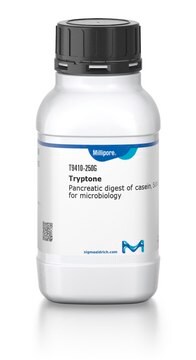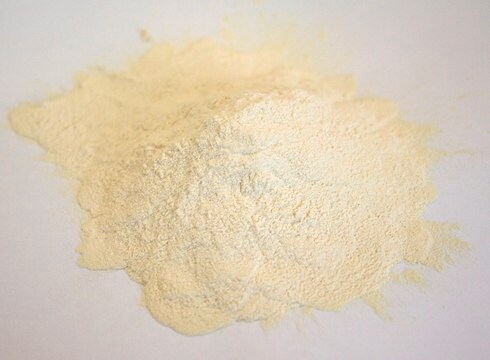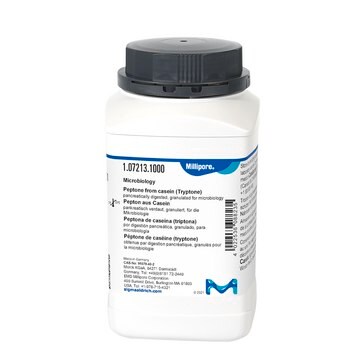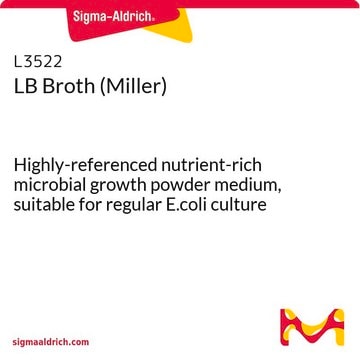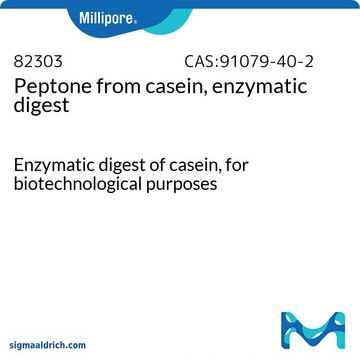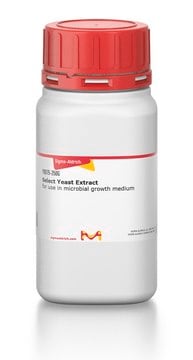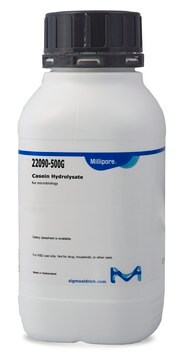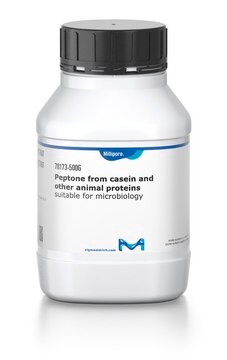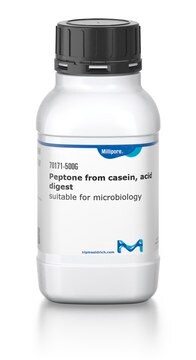T2559
EZMix® Tryptone
Pancreatic digest of casein
Synonym(s):
Peptone from casein
About This Item
Recommended Products
grade
for molecular biology
Quality Level
sterility
non-sterile
form
powder
storage temp.
room temp
suitability
nonselective for Escherichia coli
nonselective for coliforms
Looking for similar products? Visit Product Comparison Guide
General description
Application
Features and Benefits
- Granulated, dust-free format for safer handling and faster mixing
- Easy scale-up using larger package sizes
Legal Information
related product
Signal Word
Danger
Hazard Statements
Precautionary Statements
Hazard Classifications
Resp. Sens. 1
Storage Class Code
11 - Combustible Solids
WGK
WGK 1
Flash Point(F)
Not applicable
Flash Point(C)
Not applicable
Personal Protective Equipment
Certificates of Analysis (COA)
Search for Certificates of Analysis (COA) by entering the products Lot/Batch Number. Lot and Batch Numbers can be found on a product’s label following the words ‘Lot’ or ‘Batch’.
Already Own This Product?
Find documentation for the products that you have recently purchased in the Document Library.
Customers Also Viewed
Articles
Technical Article on yeast media. Yeasts are eukaryotic microorganisms whose genomes have been comprehensively studied and some have been sequenced.
Protocols
TE Buffer; Elution Buffer; 10x Ligation Buffer; 0.5 M PIPES Buffer; Inoue Transformation Buffer
Yeasts are considered model systems for eukaryotic studies as they exhibit fast growth and have dispersed cells. Yeast cultures can be grown, maintained, and stored in liquid media or on agar plates using techniques similar to those for bacterial cultures.
General protocols for growth of competent cells in microbial medium.
Our team of scientists has experience in all areas of research including Life Science, Material Science, Chemical Synthesis, Chromatography, Analytical and many others.
Contact Technical Service